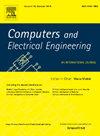A deep learning model based on multi-attention mechanism and gated recurrent unit network for photovoltaic power forecasting
IF 4
3区 计算机科学
Q1 COMPUTER SCIENCE, HARDWARE & ARCHITECTURE
引用次数: 0
Abstract
Solar energy plays a crucial role in the power grid due to its clean, stable, and cost-effective nature, as well as its significant storage potential. Accurate short-term photovoltaic (PV) power forecasting is essential for effective grid management and dispatching decisions. This study introduces a hybrid deep learning model integrating multiple attention mechanisms and gated recurrent unit networks to forecast PV output power one day in advance. To address the impact of random weather variations and historical PV power data on forecasting accuracy, the model incorporates an input attention mechanism to process input features. Additionally, temporal and spatial attention mechanisms are embedded within the encoder-decoder framework to enhance prediction performance. These mechanisms effectively capture the relationships between historical PV power output and meteorological variables while identifying crucial time-dependent hidden states. The proposed model is validated on a real-world PV dataset, achieving a mean absolute error of 0.0903 under favorable weather conditions, demonstrating a 22.5 % improvement over traditional forecasting methods across various weather classifications. Comparative analyses with other state-of-the-art models confirm that the proposed approach offers superior predictive accuracy.
基于多注意机制和门控循环单元网络的光伏发电预测深度学习模型
太阳能由于其清洁、稳定、经济的特性以及巨大的存储潜力,在电网中起着至关重要的作用。准确的短期光伏发电功率预测对于有效的电网管理和调度决策至关重要。本研究引入一种混合深度学习模型,结合多重注意机制与门控循环单元网络来预测光伏发电一天前的输出功率。为了解决随机天气变化和历史光伏发电数据对预测精度的影响,该模型结合了输入注意机制来处理输入特征。此外,在编码器-解码器框架中嵌入了时间和空间注意机制,以提高预测性能。这些机制有效地捕捉了历史光伏发电输出与气象变量之间的关系,同时识别了关键的随时间变化的隐藏状态。该模型在真实的光伏数据集上进行了验证,在有利天气条件下的平均绝对误差为0.0903,在各种天气分类中比传统预测方法提高了22.5%。与其他先进模型的比较分析证实,该方法具有优越的预测精度。
本文章由计算机程序翻译,如有差异,请以英文原文为准。
求助全文
约1分钟内获得全文
求助全文
来源期刊

Computers & Electrical Engineering
工程技术-工程:电子与电气
CiteScore
9.20
自引率
7.00%
发文量
661
审稿时长
47 days
期刊介绍:
The impact of computers has nowhere been more revolutionary than in electrical engineering. The design, analysis, and operation of electrical and electronic systems are now dominated by computers, a transformation that has been motivated by the natural ease of interface between computers and electrical systems, and the promise of spectacular improvements in speed and efficiency.
Published since 1973, Computers & Electrical Engineering provides rapid publication of topical research into the integration of computer technology and computational techniques with electrical and electronic systems. The journal publishes papers featuring novel implementations of computers and computational techniques in areas like signal and image processing, high-performance computing, parallel processing, and communications. Special attention will be paid to papers describing innovative architectures, algorithms, and software tools.
 求助内容:
求助内容: 应助结果提醒方式:
应助结果提醒方式:


